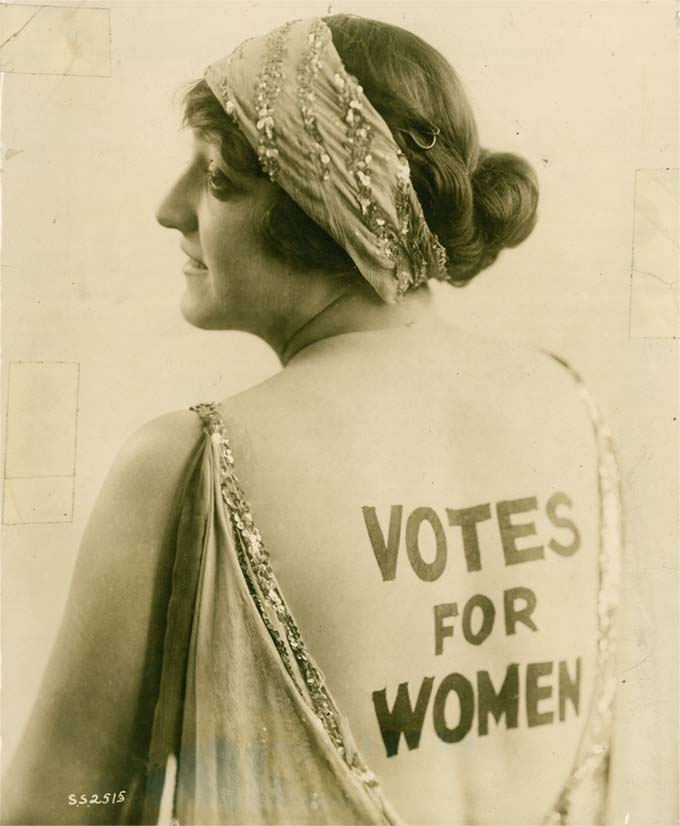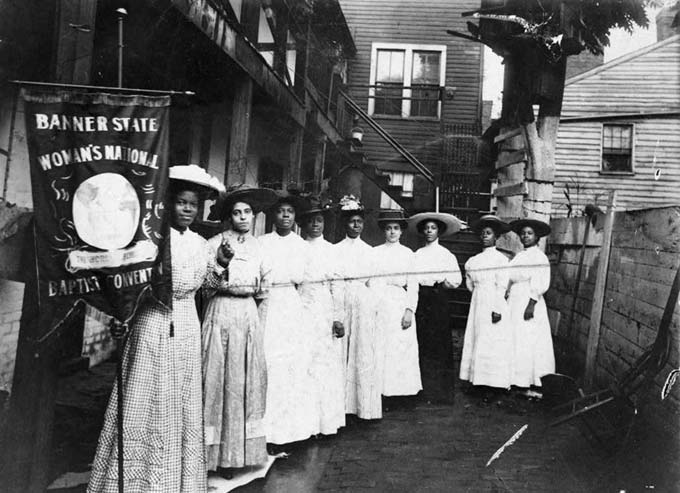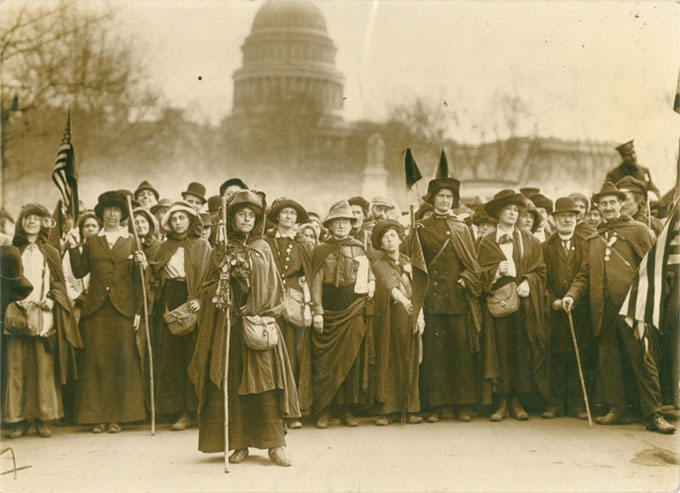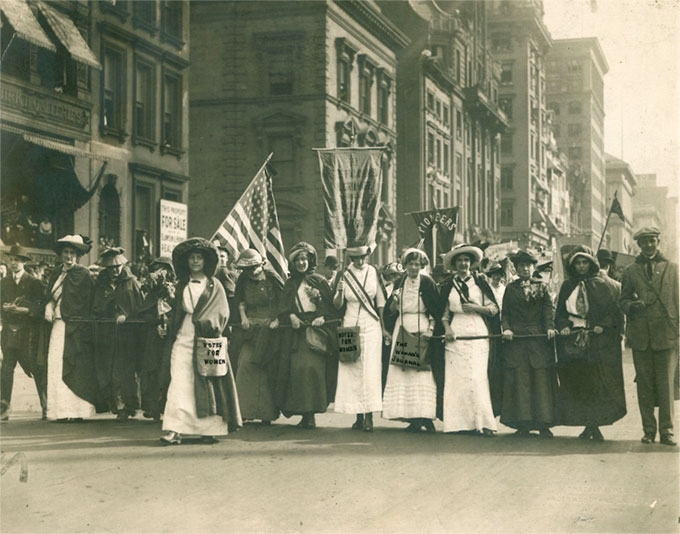Votes...for Women?
–

Underwood & Underwood (American photography studio, active 1882–1940), Pretty Advocate of “Votes for Women” Creates Sensation with Plea for Cause Painted on Her Charming Back, 1915, gelatin silver print on paper (vintage). Collection of Middlebury College Museum of Art. purchase with funds provided by the Memorial Art Fund and the Reva B. Seybolt ’72 Art Acquisition Fund, 2018.072.
Should American women vote? In the world’s most prominent democracy, that question was ignored for decades. In fact, women were not allowed to participate fully as voters until the ratification of the 19th Amendment in 1920. As we approach the 100th anniversary of women winning the vote, the museum’s exhibition Votes…for Women? provides an opportunity to explore the movement that made that change possible.
The activists who took on the cause of woman suffrage came from all walks of life and all corners of the country. They tackled long-held societal assumptions about women’s nature and capabilities. They challenged the conventional wisdom about how and where women could be useful, and they did so as creatively and effectively as they could with the resources available to them.
Suffrage leaders, and the growing number of supporters who followed them, encountered many obstacles as well, including plenty of their own making. They disagreed over priorities and tactics, and they were blind to the perspectives of women from different social and racial backgrounds. Seventy years of debating and organizing, however, laid the groundwork for an idea that Congress would finally embrace and that the states would go on to endorse as well.

Nine African-American women posed, standing, full length, with Nannie Burroughs holding banner reading, “Banner State Woman’s National Baptist Convention” (From Library of Congress, Prints & Photographs Online Catalog)
Why shouldn’t women vote? For a nation whose government depended on the voice of the people, what was the logic of ignoring more than half of them? Nineteenth-century Americans viewed women as defined by their biology and understood their place in society to be based on well-established religious and legal traditions that largely confined women’s influence to the home. Woman was the weaker sex and the original sinner. Alternatively, she was the giver of life and the angel of the home. From either perspective, the majority of Americans considered women unfit for the public realm of competitive politics and voting. Some saw women as needing protection from a harsh, industrializing world. As discussions developed around women contributing to their democracy, those in support of the idea of women voting articulated a couple of different arguments, which they used to counter the anti-suffrage status quo.
Votes…for Women?—an exhibition of vintage photographs, banners, and memorabilia designed to coincide with the 100th anniversary of the campaign to ratify the 19th Amendment to the US Constitution in 1920—examines the rhetoric, strategy, tactics, and challenges of the woman suffrage movement and briefly considers its broader legacy in American society. It also focuses on the local scene, comparing the suffrage story here in Vermont to that of neighboring New York.
Middlebury students in “The Woman Question,” a Fall 2018 first-year seminar, were deeply involved in the conception of this exhibition, curated by Professor of History Amy Morsman. Rebecca Berlind, Ciara Carlson-Healy, Maya Fray-Witzer, Gillinda James, Sam Martin, Ellie Thompson, and members of Middlebury’s Oratory Now contributed their time and talents to the reading of speeches to enhance the exhibition, engineered by Gary Savoie and Sam Martin, and coordinated by Professor Dana Yeaton.
Additional Press Images

The suffragette “hikers” led by General Rosalie Jones at the Capitol, about to march up Pennsylvania Avenue, Washington, D.C., February 27, 1913. Photograph by Underwood & Underwood. Collection of Middlebury College Museum of Art, purchase with funds provided by the the Memorial Art Acquisition Fund and the Reva B. Seybolt ’72 Art Acquisition Fund, 2018.

